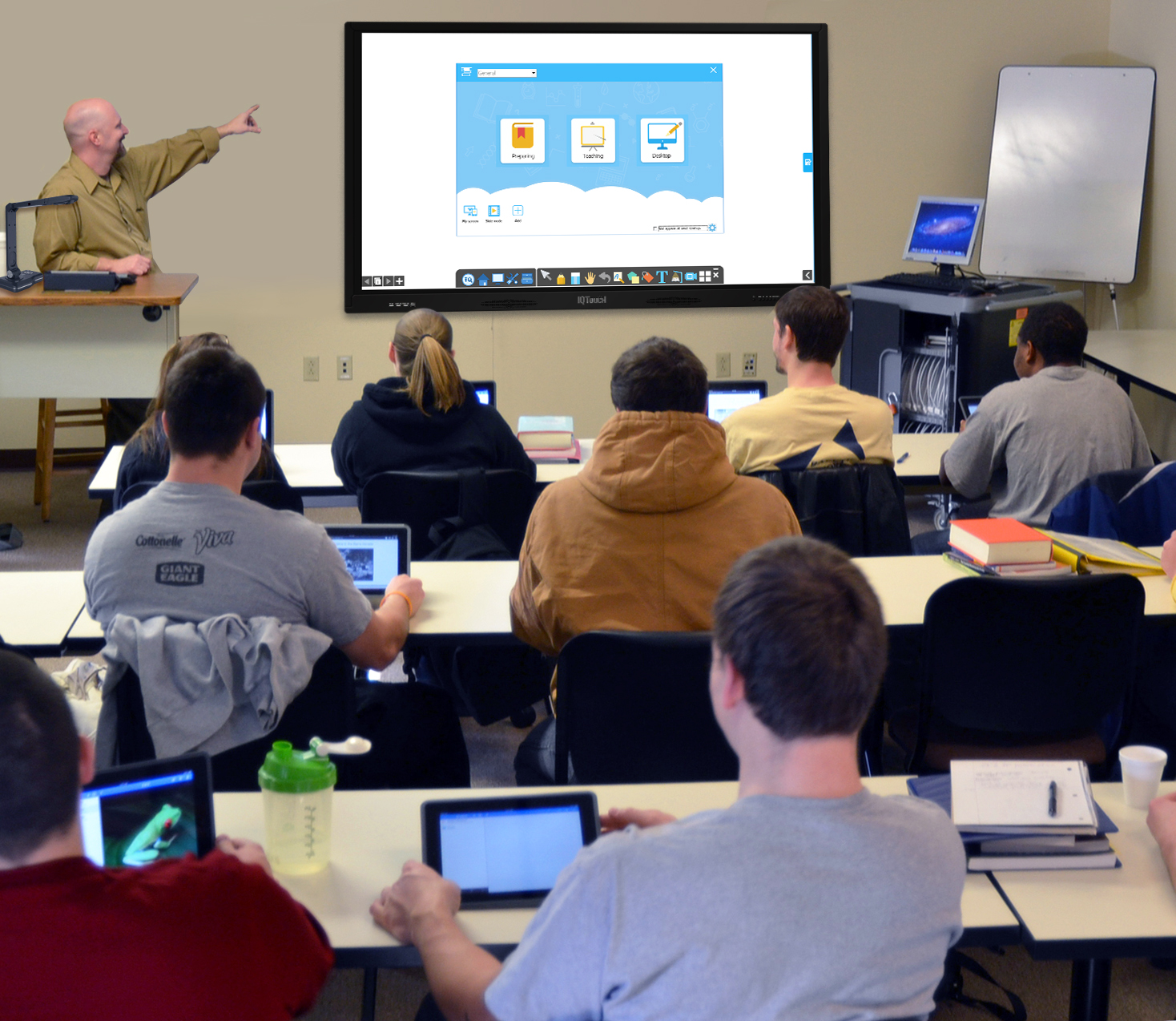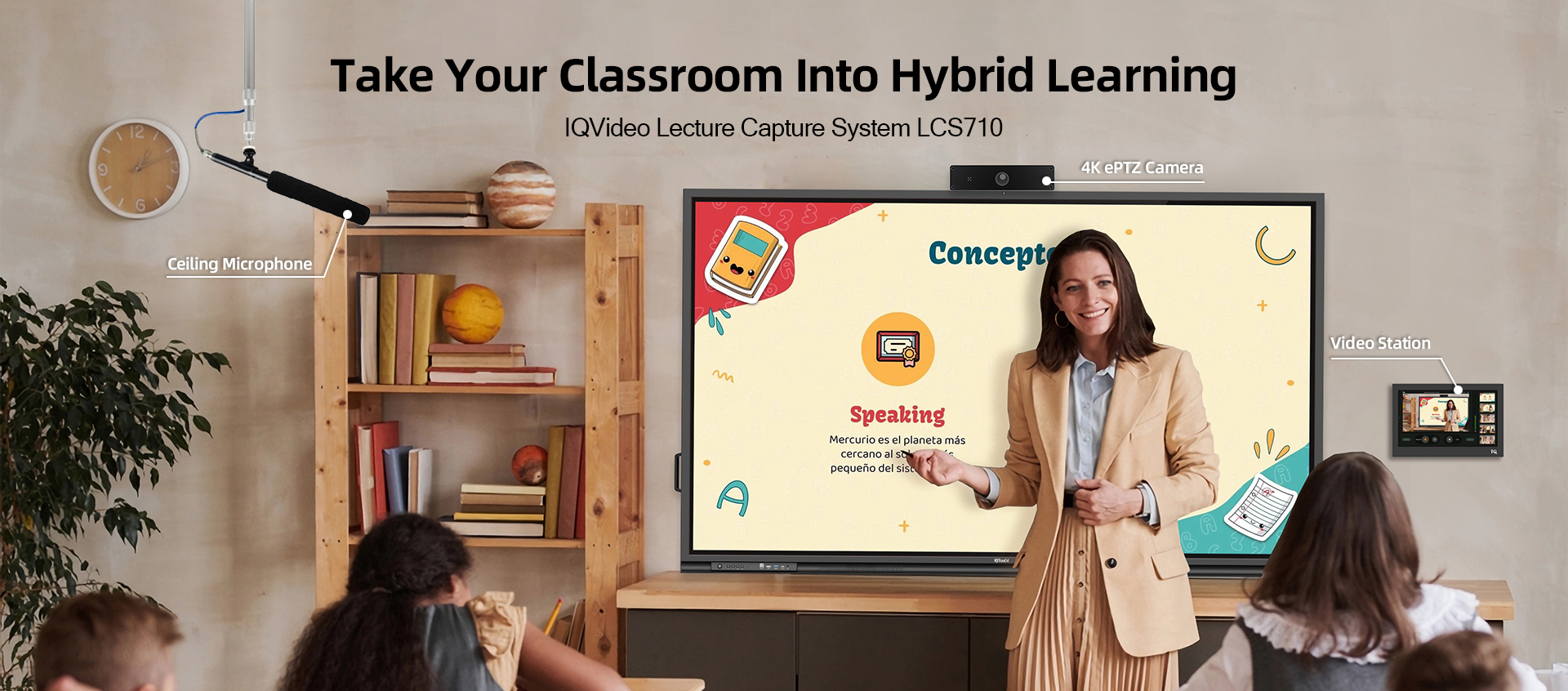Modern education has increasingly focused on teacher-student interaction. Many schools have equipped their classrooms with various types of AV equipment to enhance interaction. Among these, an interactive flat panel is considered essential for an interaction-intensive classroom. When it comes to purchasing an IFP display, we would naturally think of a screen in terms of its size, screen material, resolution, and others related to our visual experience. For anyone who wants to know what to consider before making the purchase or anyone who is just getting some technical knowledge about IFP display, then reading this article could be a good point to start with. So here, we will narrow it down to IFP screen composition, screen resolution, and screen sizes. This article is all about the screen and its application.
1. IFP screen composition
Currently, the most popular screen types on the market are optical bonding and air bonding. These two types of screens vary by their bonding method, bonding processing, bonding material, and so on.
1.1Air bonding
Whether it is an air-bonding display or optical bonding display, screens are composed of two key components: LCD panel and cover glass. The screen glass actually serves as protection against scratches and damages by abrasive material. And you might be curious about why we call it air bonding and where the air comes from.
Traditionally, touch screens (touch panel or cover glass) are attached or laminated onto the LCD cells using adhesive types by the two edges of the screen glass, thus leaving a gap between the glass and LCD panel. The gap normally ranges from 1 to 2 mm.
1.1.1Disadvantage
This process is referred to as air bonding because this bonding method creates an air gap that is not only detrimental to but also wakens the LCD display, in addition, it also caused distorted screen images in sunlight and attracts impurities and dirt to go into the gap, and consequently shorten the life of the display. But air bonding interactive flat panel display is price competitiveness. If you are budget-tight, then, an air bonding interactive display is good to start with.
2. Optical bonding
Compared with air-bonding interactive flat panels, optical bonding features no air gap between a touch screen and the LCD module. The gap in between the touch panel (or cover glass) and the LCD panel is filled with liquid optically clear adhesive (LOCA). And this adhesive material is cured and hardened via a UV-light process, creating an optically transparent layer. Because there are zero gaps between the touch panel glass and LCD, it prevents impurities and dirt from going inside. Therefore, it is more endurable with a longer life span compared with air bonding. It is ideal for high-end application scenarios.
3. Zero bonding
Zero bonding is somewhere between air bonding and optical bonding in terms of air gap clearance. It usually measures between 0 to 1 mm. The air gap is almost unnoticeable. The smaller gap is made possible by putting in a layer of transparent material between the glass cover and the LCD module. More importantly, zero-bonding screens tend to be thinner in screen thickness and lighter when compared to both air-bonding and optical-bonding displays. Given its lightweight, smaller air gap, and relatively lower production cost, zero bonding is well sold on the market for its cost-effectiveness and quality. TB1100Pro interactive flat panel is the one that features zero+ bonding (with smaller air gaps).
Now we have a basic understanding of the advantages and disadvantages of optical bonding and air bonding interactive display. Let’s take a closer look at their pros and cons by making a comparison between them.

3. Optical bonding versus air bonding
One noticeable difference between optical bonding and air bonding is that optical bonding has higher transmittance. The optical bonding transmittance is 0.94 while air bonding transmission stays around 0.87. Because of the higher transmittance, the optical bonding screen features a higher brightness, and no light, and shadow effect. So optical bonding screen gives you a crystal-clear image for a better visual experience.
3.1 Transmittance
To be specific, the optical bonding screen gives you true UHD with higher brightness and contrast. Additionally, the optical bonding display gives you a real 178-degree readable angle, which means you can still see the image on the display clearly when you look at the screen from sideways at 178 degrees, while the image from the air-bonding display can be very blurry. IQTouch HA1100 series interactive display feature optical bonding with enhanced 4k and a true 178-degree view angle. It applies the latest optical bonding technology to achieve higher readability and dust-free clarity, ensuring everyone to see the screen images clearly.
3.2 Internal reflection & shadow effect
Moreover, the optical bonding has no air gap inside, so it effectively eliminates internal reflection. While air bonding creates up to 3 different index reflections. So, it could lead to light reflection on the image. Optical bonding shows no light and shadow effect.
4. Eye protection
In addition to screen display composition, a visual-friendly IFP display should come with eye protection against blue light. But that is not enough. To better ensure a clear screen image, anti-glaring (AG) and anti-friction (AF) features are needed to prevent the screen from being blurred due to fingerprint, dust, or grease while protecting people against the glaring light for greater visual comfort. Apart from the quality of the screen, the size of the screen is also of great importance.
5. Screen size
What size of the interactive display you need is pretty much determined by the space in which the display is used. The larger space, the bigger display is required. The screen sizes available on the market is 55″, 65″, 70″, 75″, and 86”. While the most popular display sizes is 65”, 75” and 86”. They are suitable for use in small meeting rooms, huddle rooms, conference rooms, training rooms, classrooms, and so on. See https://www.iqboard.net/product.php
Summary
Interactive flat panel drives interaction in business and education. IQ has been around in the two fields for over 17 plus years. IQ stays committed to delivering top-rated and high-performing interactive flat panel display along with other systems and equipment like wireless presentation systems and so on for better interaction and collaboration. We not only provide products but also the solution to accommodate your application. Any inquiries, please contact.
Copyright © 2017.Returnstar Interactive Technology Group Co., Ltd All rights reserved.
